Oberea myops Haldeman
Blueberry stem borer is a beetle also known as the rhododendron stem borer and the azalea stem borer. It is in the family Cerambycidae [long-horned borers] and has a two to three year life cycle. It overwinters as a larva, usually boring low somewhere in the plant, possibly an adaptation to improve winter survival. [You’re more likely to be covered with insulating snow if you’re low in the bush.] The fully mature larva is yellowish, about 25 mm (one inch) long, and only about 3mm (1/8 inch) wide. It pupates in the tunnel in spring, and the adult beetle usually appears in New Hampshire about the third week of June. Host plants include blueberry, rhododendron, azalea, and mountain laurel. The adult is about 14-16mm long (slightly over ½ inch), with long black antennae. Most of the adult beetle (head, pronotum, abdomen) is a light orange-brown color, but the wing covers are dark gray. The pronotum (section just behind the head) has two black dots. The beetle is nearly identical in shape to its close relative, the raspberry cane borer.

After mating, the females search for egg laying sites. On blueberry they seem to prefer large diameter shoots of this year as the egg laying site, and lay an egg just under the bark, usually close to the base of the shoot. The egg is cream colored, 3mm long and about ½ mm wide. You’d have to carefully peel away the outer layer of the shoot, to find the egg.
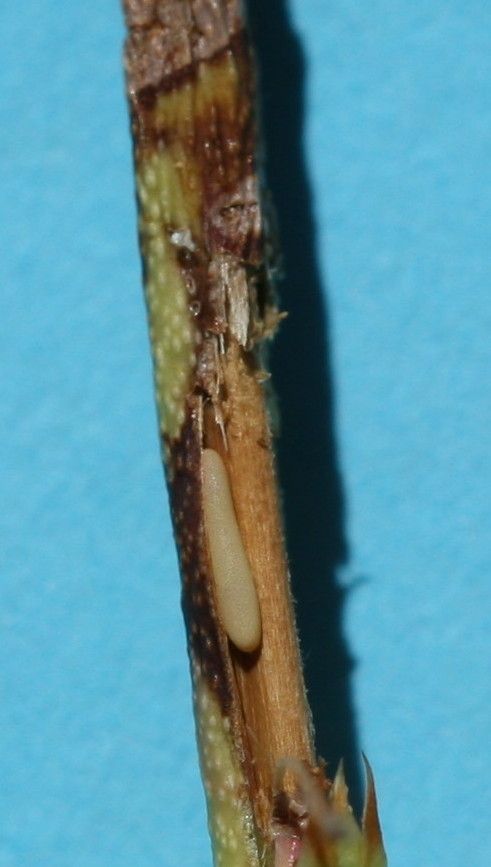
The female beetles use their mouthparts to make a messy girdle, just above and just below the spot where they laid the egg. This causes the branch tip to brown and die. The girdle isn’t as neat as that of raspberry cane borer, a close relative. Girdled blueberry shoots appear about the 3rd week of June. If you remember to look for the girdle marks, this injury is relatively easy to identify.
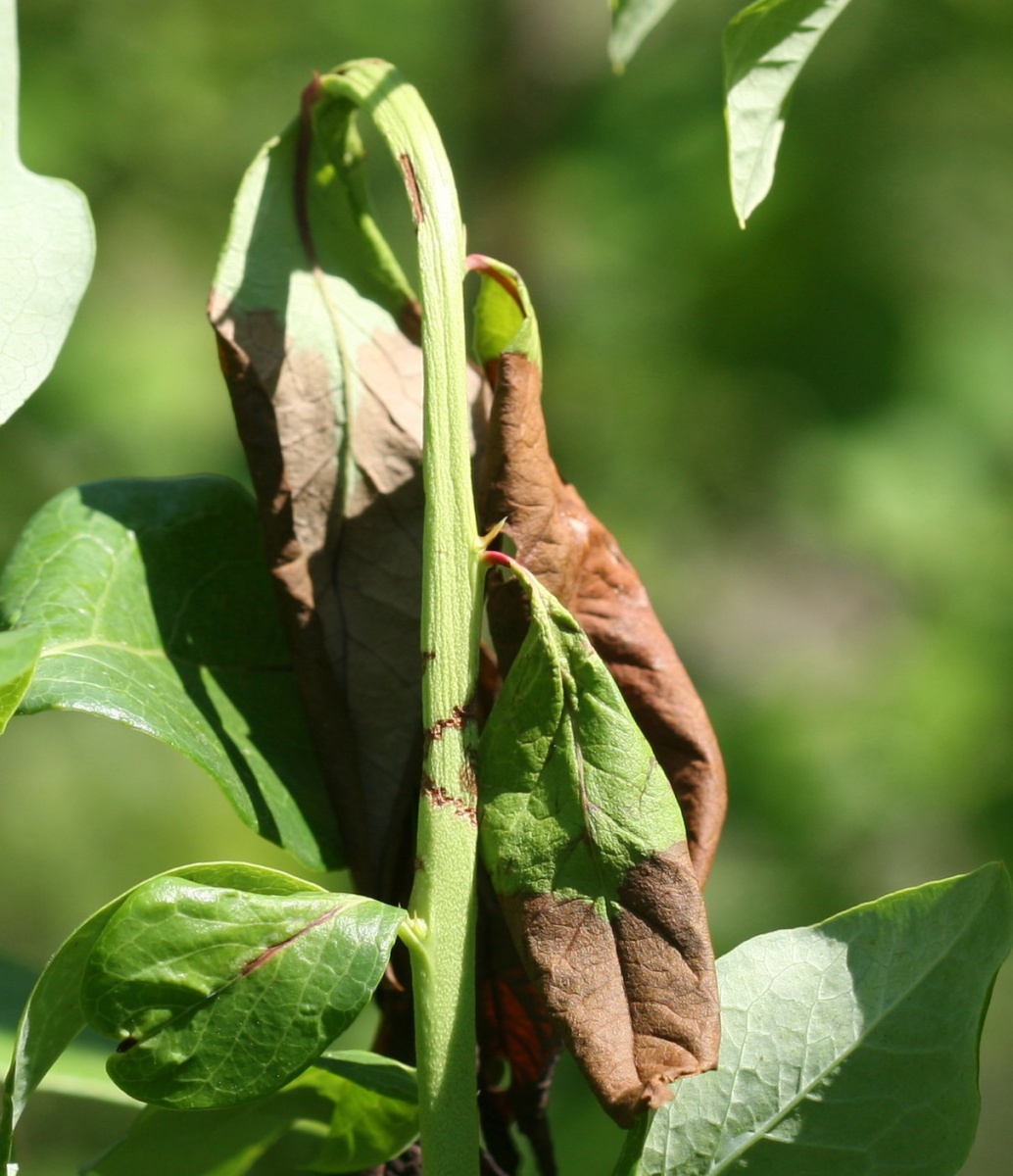
The egg hatches and the grub bores into the branch and slowly down the stem. At first, the tunnel is small diameter, but as it bores farther down, it gets larger.

Some references suggest that this insect takes two years to complete its development, while others say three. At intervals, the borer creates a hole to the surface, and uses it to force out the light colored pellets of frass (droppings) that fill the tunnel.
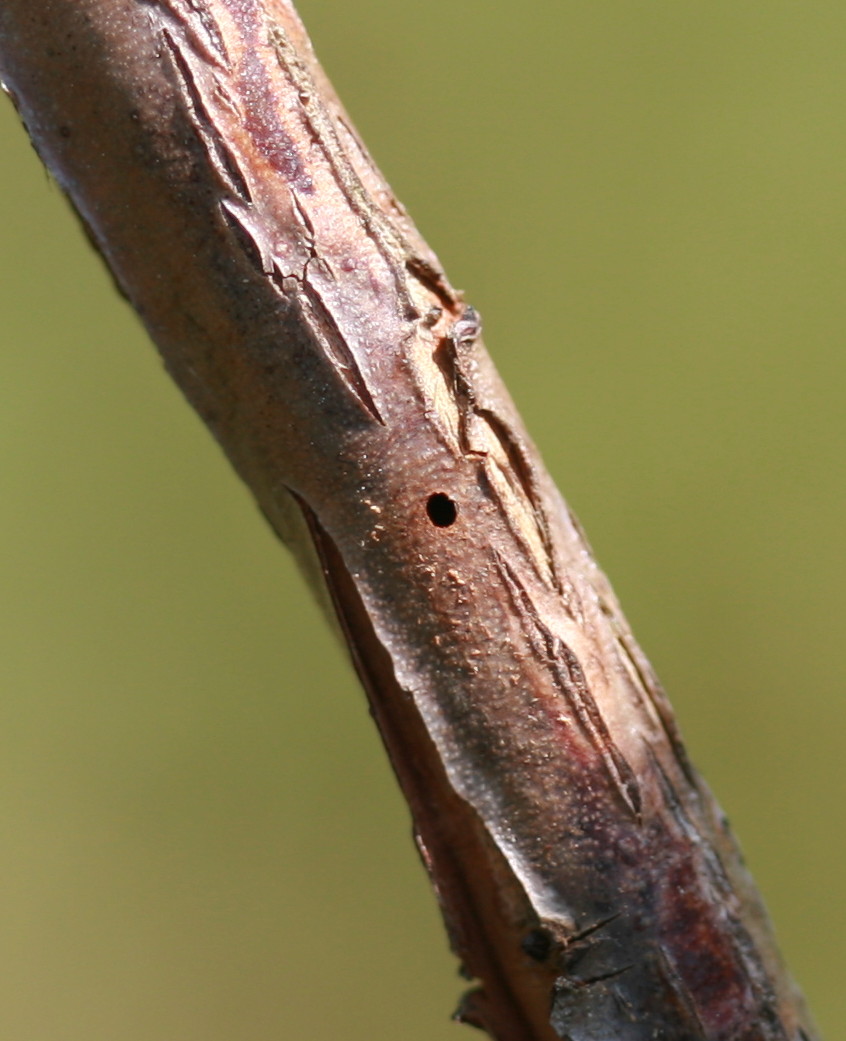
You can sometimes detect infested bushes by noticing the sawdust-like pellets falling from some branches. In late June and early July, new infestation sites are easy to spot because of the dying shoots that have the messy girdling. Attack rate is usually highest on edges of plantings, especially if many unmanaged hosts are nearby: azalea, blueberry, laurel or rhododendron.
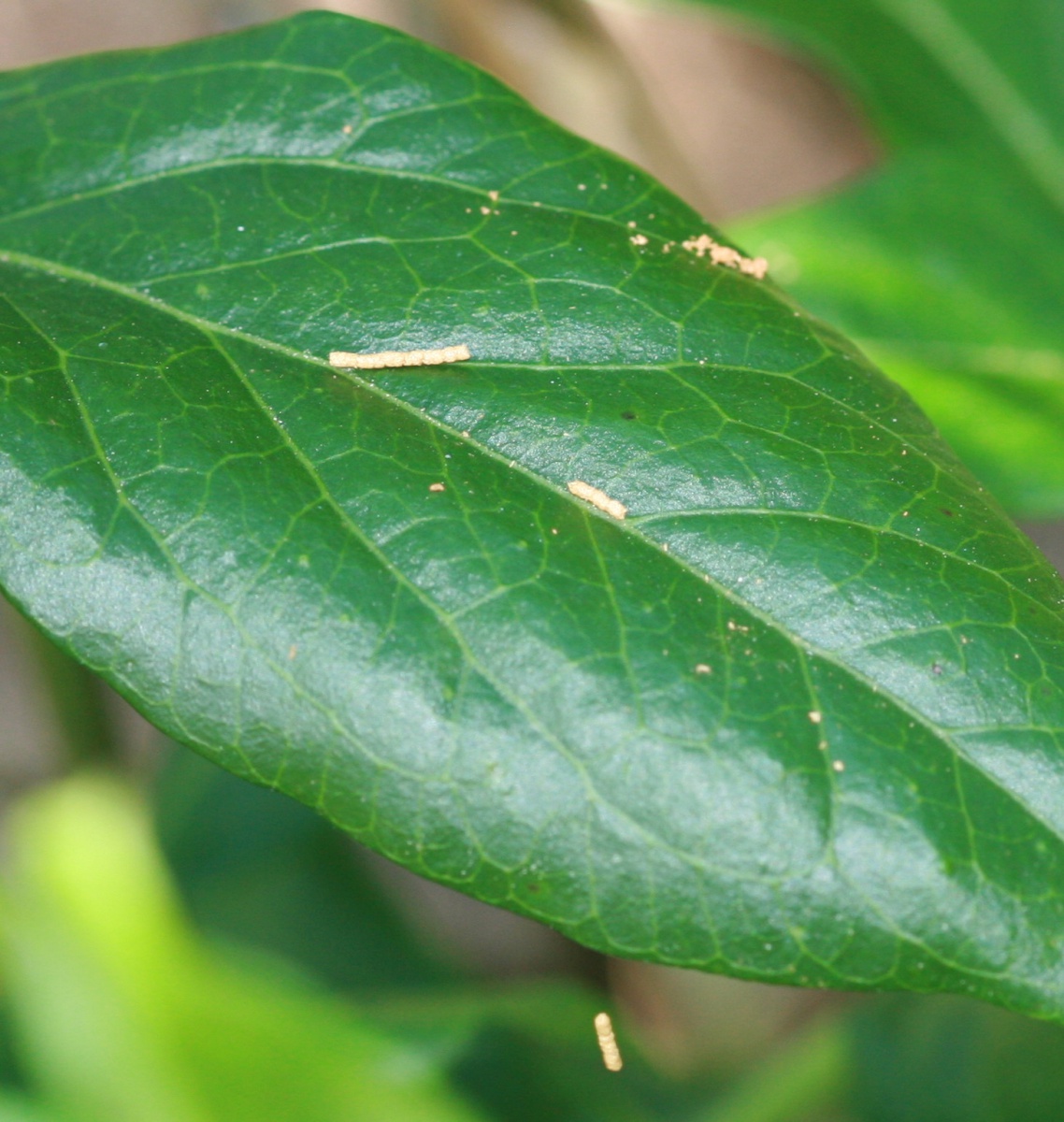
Management
Plantings that are infrequently or never pruned suffer the greatest injury, and pruning shears are the best control device, not insecticides. Prune your plantings annually. This regularly removes the weak wood, so you tend to remove the borers without even thinking about it. In plantings where attack rate is high, it may be helpful to search June 20th-30th for newly girdled shoots, and prune them out below the girdle. The brown foliage stands out easily at that time. Although some insecticides may kill the adults when they are active, I do not recommend spraying for this pest. Eliminating nearby unmanaged hosts (azalea, rhododendron, laurel, blueberry) may reduce the attack rate in sites with a significant problem. This insect is a fairly good flier, so the host-free zone would have to be many hundreds of feet or more ----- impractical for some situations.
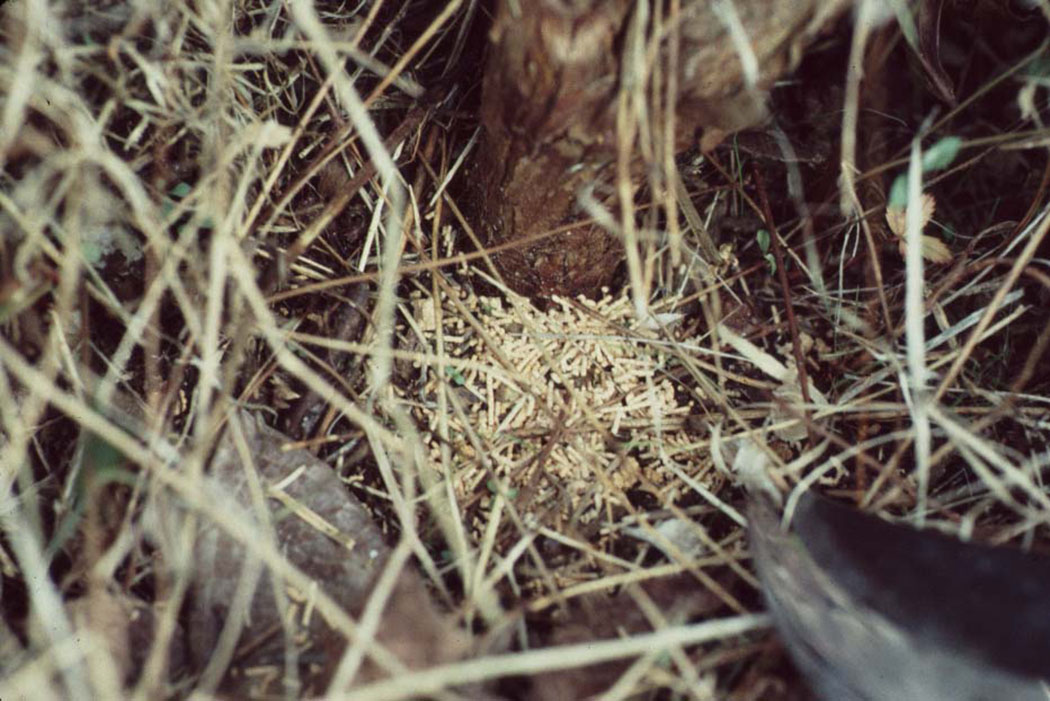
Download the Resource for the complete factsheet.
